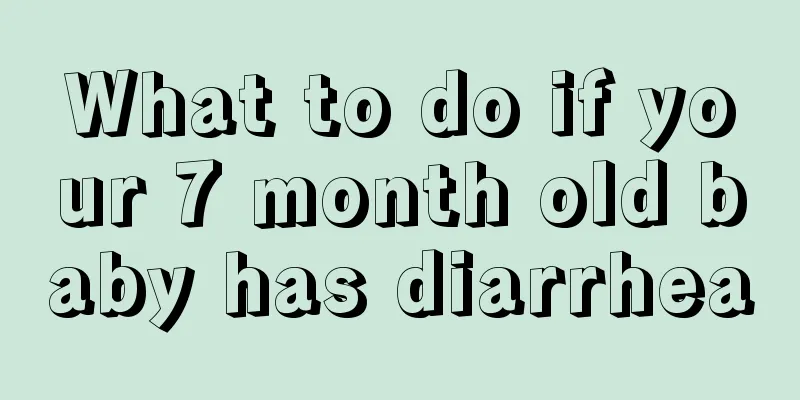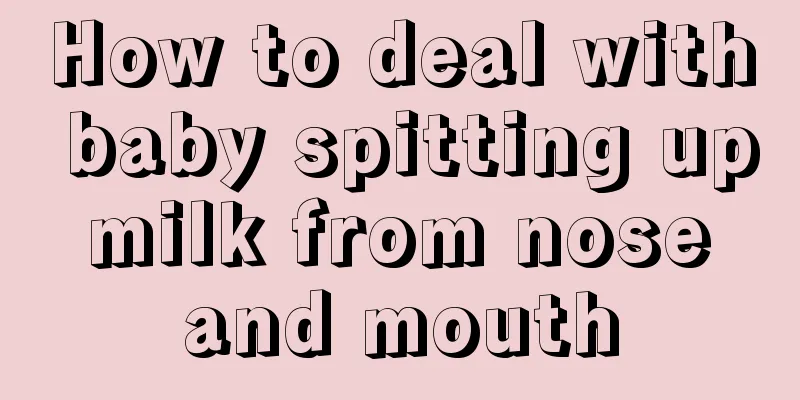What are the specific reasons why newborns cry non-stop?

|
For newborns, it is easy to cry incessantly. Crying can be mainly divided into physiological crying and pathological crying. Physiological crying will not affect the child's health, such as when the child is thirsty, hungry, or inappropriately dressed, etc. If the crying is pathological, it should be taken seriously, such as oral ulcers, colds, fever, nasal congestion, otitis media, brain disease, etc. 1. Physiological baby crying The characteristics of physiological infant crying are that when there is no disease, the crying often gradually changes from light to loud, and the crying stops after the factors are removed. Most of the time, it is caused by physiological reasons. 1. Hunger and thirst It is more common in infants under 3 months old due to hunger, such as insufficient breast milk, too dilute milk powder or too long interval between two feedings. The weather is hot in summer. Sweating a lot, if not replenishing water in time, may cry due to thirst. 2. Wet, itchy, cold, hot Failure to change wet diapers is a common cause of crying. Too much cold or too much heat can make babies uncomfortable. Eczema on the face or body is more likely to itch and cause crying in a hot environment. The area is extremely itchy after being bitten by an insect. 3. Inappropriate clothing Newborns are bandaged too tightly or their clothes are too large to restrict their movements or affect their breathing; thin underwear and coarse sweaters on the outside may cause discomfort due to irritation of the skin by the wool. 4. Before urination and defecation Trained babies often cry to indicate they want to defecate or urinate. For example, some babies may suddenly cry in their sleep in the middle of the night because their bladder is full, indicating that they need to urinate. 5. No one around When a baby wakes up and finds that there is no one around, he feels lonely and cries to attract his relatives to keep him company. 2. Pathological infant crying Pathological infant crying is characterized by intense, prolonged crying, high-pitched or particularly low crying, and crying often occurs at the same time as certain symptoms or signs. The more common diseases are: 1. Oral ulcers Most babies cry and fuss when feeding or eating, especially when eating hot food, often accompanied by drooling. 2. Nasal congestion Babies with nasal congestion cry because of hunger, and stop immediately after feeding. However, the nasal congestion affects their breathing, so they have to stop sucking and breathe through their mouths. They cry again because they cannot get milk, forming a situation of crying and eating, eating and crying. 3. Brain diseases When a newborn suffers from intracranial hemorrhage or meningitis, he or she may cry in waves, which are high-pitched, rapid and without echo. Older infants may cry because of a headache when they have meningitis or other causes of intracranial hypertension. At the same time, hit your head with your hands or bang your head against a wall or wooden door. 4. Otitis media External auditory canal sore and swelling. The baby cries when the ear is pressed against the mother's body during feeding or when the baby's ears are pulled. 5. Skin ulcers Crying occurs when the skin in the armpits, neck, or groin is rubbed. |
<<: How to take care of roseola infantum rash?
>>: What are the key points of nursing for newborn baby with eczema?
Recommend
Why is my two-month-old baby restless when sleeping during the day?
After the birth of a newborn, the expectant paren...
Treatment of appendicitis in children
In recent years, the effect of treating appendici...
Neonatal gastric tube insertion
Inserting a gastric tube into a newborn is actual...
Baby's ankle fat lines are different
Many families are very happy when welcoming the b...
The harm and causes of children grinding their teeth while sleeping
Teeth grinding while sleeping is more common amon...
Is it dangerous to have tonsillectomy in children?
Tonsils are a defensive tissue in the throat of t...
How to remedy a child's cold after kicking off the quilt
There are many ways to remedy the situation when ...
What should children eat to nourish their brains? What should they eat to make them smarter?
Today's parents place their hopes on the next...
What should I do if my child has a fever, convulsions and rolls his eyes?
Convulsions are a high-risk phenomenon. When a ch...
Treatment of pancreatitis in children
We all know the pancreas, which is a very inconsp...
What is the most effective way to treat constipation in children?
Nowadays, there are many types of children's ...
Can children undergo gastroscopy?
The physical health of children is the most impor...
How tall and how much does a five-year-old girl weigh?
With the progress of the times, people pay more a...
What is the reason for children's fever and cold hands and feet
No matter what the circumstances, the most concer...
Why do children have cold hands and feet when they have a fever?
It is a common phenomenon that young children hav...









